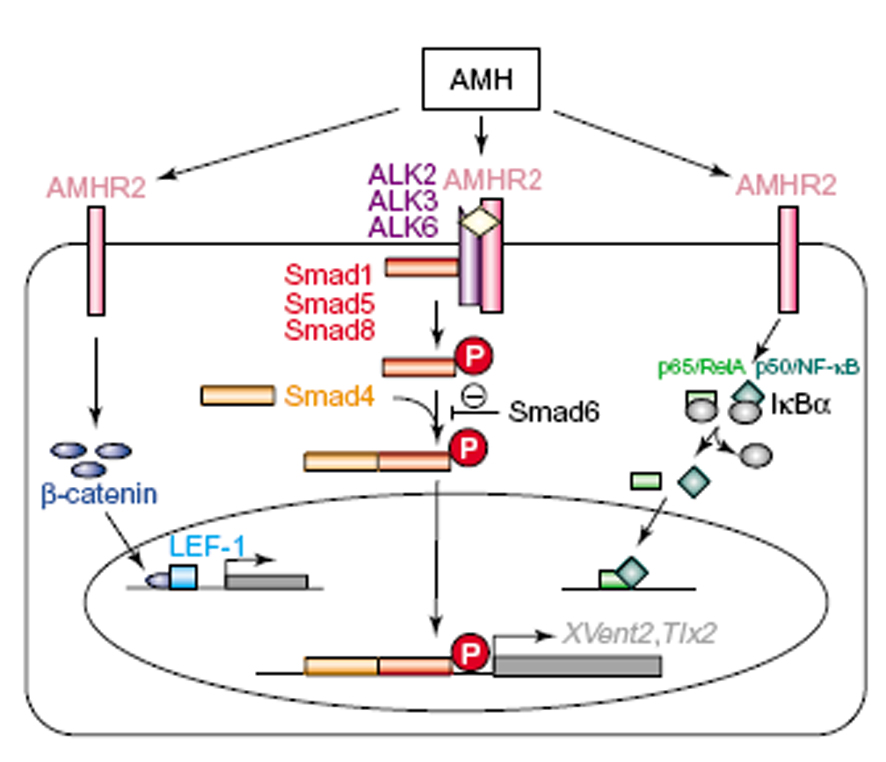
Figure 24. Proposed signaling pathways for AMH. Binding of AMH to its type 2 receptor, AMHR2, probably triggers the formation of a complex between AMHR2 and one or several candidate type 1 receptors, ALK2, 3 and 6. Activated type 1 receptor(s) phosphorylate Smad molecules 1, 5 or 8, which then bind to Smad 4 and enter the nucleus to activate BMP-specific reporter genes XVent2 and Tlx2. Smad6 inhibits this pathway. Putative accessory signaling pathways include nuclear translocation of ß-catenin and its binding to LEF-1 and induction of NFκB nuclear binding activity. In the absence of AMH, NF-κB subunits p65/RelA and p50/NF-κB are retained in the cytoplasm by the inhibitory protein IκBa. AMH releases the subunits from this inhibition and allows them to translocate into the nucleus. Abbreviations: ALK, activin-like kinase; AMH, anti-Müllerian hormone; AMHR2, AMH receptor type 2; BMP, bone morphogenetic protein; LEF-1 lymphoid enhancer factor 1; NFκB, nuclear factor κB; Smad, mothers against decapentaplegic related gene product, TGF-β, transforming growth factor. Reprinted from ref. (347) , with permission from Elsevier (copyright 2003).
